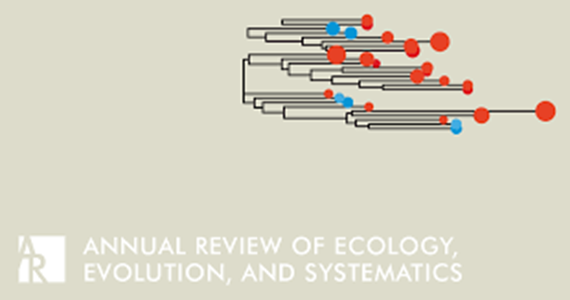马来雨林的起源与聚集
IF 11.2
1区 生物学
Q1 ECOLOGY
Annual Review of Ecology, Evolution, and Systematics
Pub Date : 2019-11-04
DOI:10.1146/annurev-ecolsys-110218-024737
引用次数: 46
摘要
解开马来西亚曾经广袤多样的热带雨林的起源是一个长期的挑战。对雨林形成的主要贡献来自印度板块携带的植物区系元素和来自澳大利亚板块的山地元素(Sahul)。Sahul的组成部分现在被理解为包括低地分类群在内的Sunda的大量双向交流。大亚洲植物区系交换(GAFIs)分别与印度和萨胡尔对马来西亚植物区系的相对贡献的证据来自当代谱系分布、化石记录、时间校准的系统发育、功能特征和遗传多样性的空间结构。功能性状和生物群落的保守性是Sahul山区南部谱系(例如,Podocarpaceae的多样性)的显著特征,而低地谱系(包括Syzygium (Myrtaceae)和亚洲龙心科(Dipterocarpoideae))的丰富度和多样性反映了一个鲜为人知的分散、生态和适应性辐射的组合。因此,马来雨林的组合是由截然不同的进化起源和生物地理历史形成的。本文章由计算机程序翻译,如有差异,请以英文原文为准。
Origins and Assembly of Malesian Rainforests
Unraveling the origins of Malesia's once vast, hyperdiverse rainforests is a perennial challenge. Major contributions to rainforest assembly came from floristic elements carried on the Indian Plate and montane elementsfrom the Australian Plate (Sahul). The Sahul component is now understood to include substantial two-way exchanges with Sunda inclusive of lowland taxa. Evidence for the relative contributions of the great Asiatic floristic interchanges (GAFIs) with India and Sahul, respectively, to the flora of Malesia comes from contemporary lineage distributions, the fossil record, time-calibrated phylogenies, functional traits, and the spatial structure of genetic diversity. Functional-trait and biome conservatism are noted features of montane austral lineages from Sahul (e.g., diverse Podocarpaceae), whereas the abundance and diversity of lowland lineages, including Syzygium (Myrtaceae) and the Asian dipterocarps (Dipterocarpoideae), reflect a less well understood combination of dispersal, ecology, and adaptive radiations. Thus, Malesian rainforest assembly has been shaped by sharply contrasting evolutionary origins and biogeographic histories.
求助全文
通过发布文献求助,成功后即可免费获取论文全文。
去求助
来源期刊
CiteScore
19.90
自引率
1.70%
发文量
21
期刊介绍:
The Annual Review of Ecology, Evolution, and Systematics is a scholarly publication that has been in circulation since 1970. It focuses on important advancements in the areas of ecology, evolutionary biology, and systematics, with relevance to all forms of life on Earth. The journal features essay reviews that encompass various topics such as phylogeny, speciation, molecular evolution, behavior, evolutionary physiology, population dynamics, ecosystem processes, and applications in invasion biology, conservation, and environmental management. Recently, the current volume of the journal transitioned from a subscription-based model to open access through the Annual Reviews' Subscribe to Open program. Consequently, all articles published in the current volume are now available under a CC BY license.

 求助内容:
求助内容: 应助结果提醒方式:
应助结果提醒方式:


